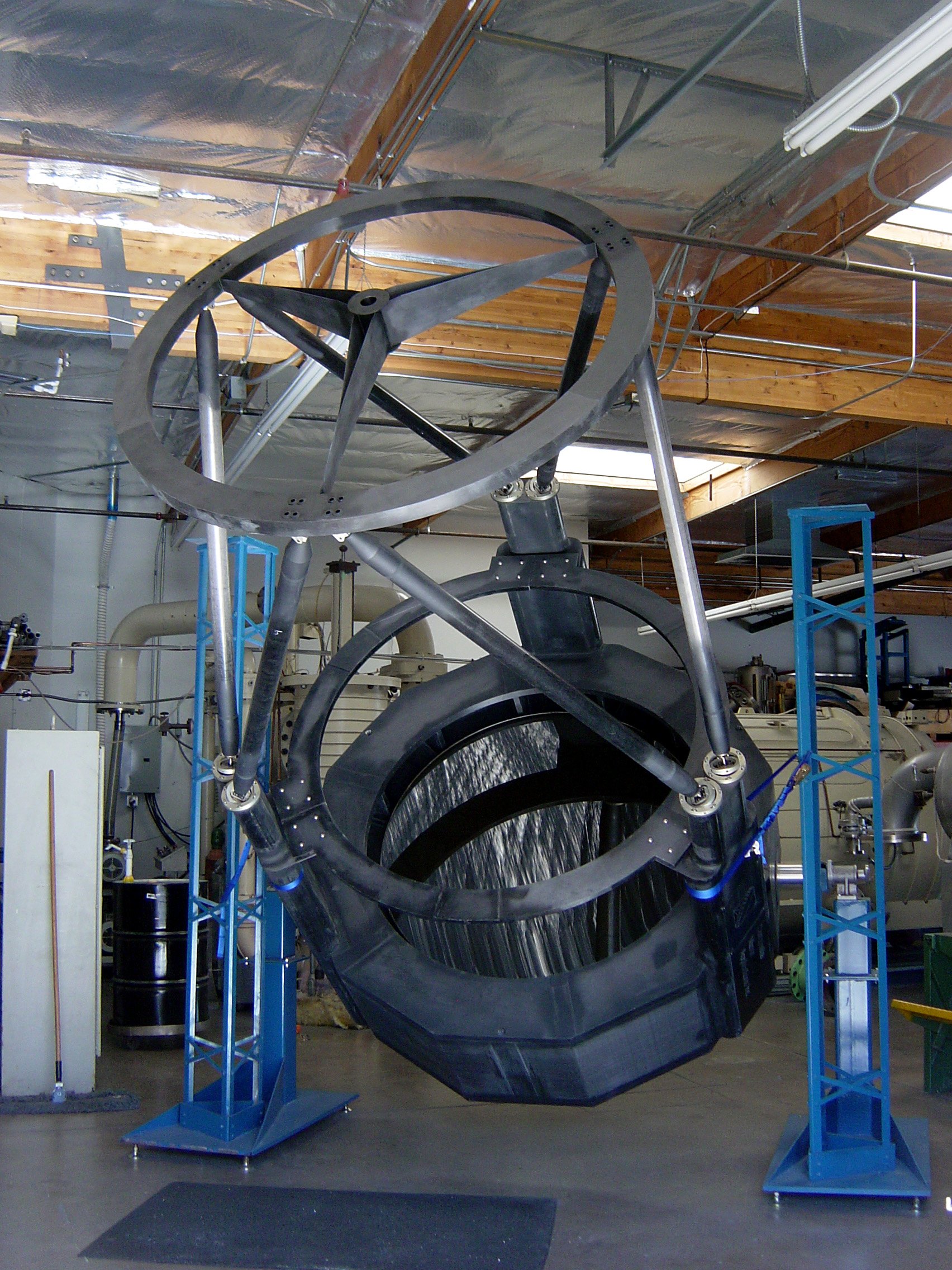Naval Prototype Optical Interferometer (NPOI) upgrade with lightweighttelescopes and Adaptive Optics: a status update
The portability of meter-class telescopes has been limited by the weight of the mirror, tube assembly and the mount required to provide pointing and tracking. The novel lightweight carbon fiber reinforced polymer telescopes being developed for array population at the Naval Prototype Optical Interferometer are orders of magnitude lighter than traditional telescopes. When combined with a lightweight carbon fiber mount, these telescopes will be easily transportable from one telescope station to another to change the interferometer baseline. The mount for a lightweight telescope is currently under development at Composite Mirror Applications, Inc. This paper reports on the design constraints of the mount, the scalability to larger aperture telescopes and the integration of sensors to measure the performance characteristics of this system during operation.
Design of a space-based infrared imaging interferometer
Present space-based optical imaging sensors are expensive. Launch costs are dictated by weight and size, and system design must take into account the low fault tolerance of a system that cannot be readily accessed once deployed. We describe the design and first prototype of the space-based infrared imaging inter- ferometer (SIRII) that aims to mitigate several aspects of the cost challenge. SIRII is a six-element Fizeau inter- ferometer intended to operate in the short-wave and midwave IR spectral regions over a 6 × 6 mrad field of view. The volume is smaller by a factor of three than a filled-aperture telescope with equivalent resolving power. The structure and primary optics are fabricated from light-weight space-qualified carbon fiber reinforced polymer; they are easy to replicate and inexpensive. The design is intended to permit one-time alignment during assembly, with no need for further adjustment once on orbit. A three-element prototype of the SIRII imager has been constructed with a unit telescope primary mirror diameter of 165 mm and edge-to-edge baseline of 540 mm. The optics, structure, and interferometric signal processing principles draw on experience developed in ground-based astronomical applications designed to yield the highest sensitivity and resolution with cost- effective optical solutions. The initial motivation for the development of SIRII was the long-term collection of technical intelligence from geosynchronous orbit, but the scalable nature of the design will likely make it suitable for a range of IR imaging scenarios.


